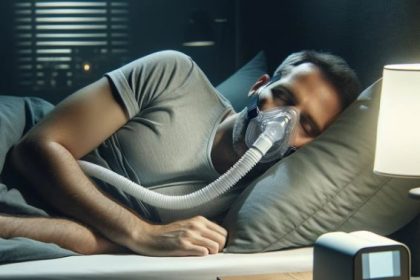Researchers Developing Sensor Able to Detect COVID-19 in the Air

Researchers from Emory University are working on a National Institutes of Health-supported project to develop a sensor capable of detecting COVID-19 in the air, called Rolosense.
“It’s tricky to anticipate what the real-world implementation will be of this technology, but we anticipate this will fill a need for point of care detection, for if you’re in your home or out in the field and want to confirm if SARS-CoV-2 is present,” said Khalid Salaita, principal investigator of Rolosense and professor of chemistry at Emory University.
Last year, Salaita became interested in solving challenges posed by the pandemic when he took part in what he describes as a “science fiction-like call” from NIH, for new ideas under a program called “Rad X” to develop ways for detecting SARS-CoV-2 potentially using airborne particles.
“The call from NIH said they were interested in automatic sensing that integrates with electronic devices, and mechanisms to detect biochemistry, at the molecular scale, into electronics, and without someone needed to process the material,” said Salaita.
Salaita began reshaping a project from 2016, which had started out as a fundamental curiosity exercise, wondering what would happen if he tuned a small microscale, or nanoscopic scale motor to address the NIH call for technology solutions to combat issues arising from the pandemic.
“No product has ever been created based on a nanoscale DNA machine, and this will be the first of its kind,” said Salaita.
The DNA machine consumes chemical energy and produces mechanical work that moves micron-sized particles. This motion offers a mechanism to convert molecular information into a microscopic readout. The motor can be visualized as moving continuously like a wheel.
The speed of the motor depends on molecular events, which is the DNA binding to RNA, and the rate of enzymatic cleavage of the RNA. The rate of these molecular processes dictates how fast it is moving.
If the motor includes antibodies, or anything that sticks to the virus, it can bind the virus to the moving particle. Likewise, if the surface also has these same antibodies, then the virus will physically bridge the wheel and the track. In other words, the wheel will hit a sticky virus patch and stop the motion.
The stalling or stopping motion can be detected through a smartphone readout by watching the motors directly in brightfield – which is what one would see looking through the eyepiece of an optical microscope.
Although previous labs have built machines and motors out of DNA, Salaita said none of them were as “fast or robust,” as the one he is building.
“This was the world’s record in terms of speed and distance for a DNA based motor,” said Salaita.
What sets Salaita’s nanoscale DNA machine apart from others is that the design is spherical, meaning it is coded all over the surface of the motor to create a type of ‘nanoscopic roller pin’ with a high density of enzymes on the surface.
The spherical shape helped to establish a balance between speed and endurance of particles, as the particles could roll, whereas past machines tended to be designed with legs on one face of the object, and as they picked up speed would diffuse their legs at the same time.
“We stumbled on this idea that if we can make these motors roll rather than walk then you get coordination, [giving] speed and endurance that someone can use as a sensor,” said Salaita.
Working with a team of biologists and bioengineers, Salaita received funding support from NIH in December 2020, which would last two years, to make the machine faster if the size of micro particles is changed.
“Along the way, we found that because of the distances that these microparticles travel, and because they are microparticles, you can watch them using a smartphone. If you put a sensor on a camera, it gives you enough ability to visualize what is happening,” said Salaita.
When the motor stops, the device sends a signal to a smartphone, and alerts the user that the SARS-CoV-2 virus has been detected at the sensor’s location.
Initially researchers wanted to give individuals the ability to detect the virus by taking a photo with a smartphone app and getting an immediate update.
However, they have recently adjusted this idea with the goal of putting the device inside stationary cameras in locations such as airports and schools.
“At this point in time we are not there, but I anticipate that this would be an initial alert, and operate in an airport or school, to alert individuals in that area that they may have been exposed,” said Salaita.
The CDC public guidance states COVID-19 spreads through airborne transmission through microscopic droplets known as aerosols. People can still get infected even if they’re more than six feet from an infected person because those aerosols can float in the air for an extended period of time.
“The primary transmission is airborne through surfaces and contact, which further supports our effort to detect viral particles,” said Salaita.
Salaita said that after the two-year funding under the NIH expires, the pandemic may be over, and there may not be huge interest in protecting against SARS-CoV-2.
However, Salaita wants his design to be used as a platform that can be tuned to whatever strain of virus is a concern, so that it could be used in any point of care settings where individuals don’t have access to expensive facilities to detect mutation.
“From a psychological perspective, having something like this available will set everyone at ease, whether SARS-CoV-2 or Ebola, or the next strain of flu, having the active monitoring will help ease everyone’s mind and get back to some normalcy,” said Salaita.
























